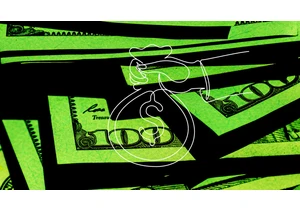On a quiet weekend afternoon, I paused to reread the diary my late mother left behind as a means of remembering her and what she means to me. Mom was a professor of Sanskrit, and amid all her reflections of her day-to-day life and the challenges of being an academic, wife, and mother were observations that were more transcendental in nature, on topics ranging from nuances of ancient Sanskrit drama to her thoughts on Eastern and Western philosophers. One passage in her diary caught my attention. In it, she invokes the Danish philosopher Søren Kierkegaard: The goal of reflection is to arrive at immediacy. It struck me as the core of leadership. We’re living through unprecedented times. We have to learn from the past and be inspired by what’s possible in the future. Yet, what we must do now is act when inaction might be easier. These are the types of insights I find through reading. The following five books, which I read in the last year, are informing my current thinking on leadership, technology, and the future. Philosopher of the Heart: The Restless Life of Søren Kierkegaard, Clare Carlisle I was reminded of my mother’s diary when reading Clare Carlisle’s biography of Søren Kierkegaard. In her book, we can feel the poetry of Kierkegaard’s thinking. His writing explores the human experience, particularly love and suffering. Considered the father of existentialism, Kierkegaard picks up where Socrates left off by asking how to be a human being in the world. How do we live ethically? Carlisle observes that Kierkegaard did not find life to be linear: “We circle back in recollection and race forward in hopes, fears, and plans.” That’s an insightful way to capture what leadership is about—creating clarity, generating energy, and driving success. These Kierkegaardian management attributes will continue to be valuable and valued. Utopia or Oblivion: The Prospects for Humanity, R. Buckminster Fuller The man remembered for his lattice shell structures, including the geodesic dome, was not a philosopher, but his architectural and system theories were no less full of the Kierkegaardian heart. In the introduction to Fuller’s Utopia or Oblivion, his grandson recalls that even on a brief drive to the airport, “Bucky,” as he was known to family, prioritized every moment to focus on making the world work for 100% of humanity. Several years ago, Fast Company reported that Fuller’s ideas, focused on problems ranging from global conflict to global climate change, are more important than ever. Those ideas stimulated a design revolution. In a world of accelerating acceleration, how can economic and technological capability be enjoyed by all—by design? Fuller writes that the physical resources of earth can support all of a multiplying humanity at higher standards of living than anyone has ever experienced or dreamed. In a world where we work to overcome constraints to resolve complex problems, Fuller shows us how design science helps us do more with less. Published in 1969, Utopia or Oblivion remains a well-argued, logical statement about our collective future. The Alignment Problem: Machine Learning and Human Values, Brian Christian Artificial intelligence is technology’s most important priority, and I’m encouraged and optimistic in how it is being applied to empower people. For example, Microsoft’s Seeing AI is an app that turns the visual world into an audible experience for people who are blind or have low vision. And tools like Immersive Reader help improve reading and writing for learners of all abilities. In The Alignment Problem, Christian offers a clear and compelling description of the hopeful and hazardous field of unsupervised learning within AI and machine learning. Courthouses, hospitals, and schools have relied on data-based machine learning models to increase accuracy and predictive power, but what happens when the data, the model, or both contain bias? Machines that learn for themselves become increasingly autonomous, and potentially unethical. In his previous book with Tom Griffiths, Algorithms to Live By, Christian investigates the computer science of human decisions. In his latest, he writes that we want machine learning models that capture norms and values, but whose norms and values? How do we align the human training of machine models with moral considerations? How do we ensure ethical values are rewarded and valued? The book is organized in three parts: identifying how today’s systems are at odds with our best intentions; creating incentives for value-based reinforcement learning; and a research tour of the author’s favorite ideas for aligning complex autonomous systems with highly nuanced norms and values. The storytelling here moves us from the theoretical to the practical while attempting to answer one of our industry’s most pressing questions: How do we teach machines, and what should we teach them? The Difference: How the Power of Diversity Creates Better Groups, Firms, Schools, and Societies, Scott E. Page When I became Microsoft’s CEO, mission and culture were the most important pillars in building our company’s future. Our mission became to empower every person and every organization on the planet to achieve more. To succeed, we needed to represent the world itself, which is the business case for why diversity and inclusion is a priority. In The Difference, Page advances the conversation by clearly defining diversity in terms of differences in how people see, categorize, understand, and go about improving the world. As a leader and a reader, I am on a continuous learning journey. The author offers us tools to get the best outcomes for all. Those tools include diverse perspectives, heuristics, interpretations, and predictive models. Known for his breakthrough book and online course, The Model Thinker, Page has built a bookshelf of titles on diversity and complexity that is vitally important to both business and society. Power of Creative Destruction, Philippe Aghion, Celine Antonin, and Simon Bunel The authors, three French economic researchers, argue that the socioeconomic problems revealed during the global pandemic—welfare, health, inequality, and many others—will not be fixed by abolishing capitalism but rather by inventing a better capitalism through the power of creative destruction, which they define as innovations that disrupt and lift societies. Their approach is hardly Pollyanna. They begin with a fascinating review of creative destruction in economic history with a focus on how we measure the wealth of nations, GDP, Gini coefficients, and productivity, which the authors find useful but insufficient in today’s technology-plus-data world. Instead, they write, innovation and diffusion of knowledge should be at the heart of growth processes and measurements. Innovation relies on incentives and protections. From where I sit, this must emphasize inclusive economic opportunity for everyone. We have to equip everyone with the skills, technology, and opportunity to pursue the in-demand jobs of a changing economy. Creative destruction is a constant conflict between the old and the new, the incumbent and the insurgent. Philosophical, yes, but also practical advice. This is daily life in our industry.
Satya Nadella is the executive chairman and CEO of Microsoft. His previous book recommendations can be read here.
Login to add comment
Other posts in this group

Google released its new Gemini 2.5 Pro Experimental AI model late last month,

TikTok is shutting down TikTok Notes—wait, you didn’t even know it existed? Well, that explains a lot.
TikTok Notes, the platform’s short-lived attempt to take on Instagram (just as Inst

Influencing has a major pay gap, and it’s not what you might expect.
A new report from Collabstr, based on over 15,0


Tech leaders often brand themselves as “disruptors”—and few fit that label more snugly than Elon Musk. In the three months since joining Donald Trump in the White House following Trump’s election,

As the weekend deadline for TikTok to find a buyer approaches, bidders for the short-video so

At Visa’s ETA Transact event on April 3, the payments giant introduced three new products designed to simplify and secure payment acceptance. These innovations—Authorize.net 2.0, Unified Checkout,
